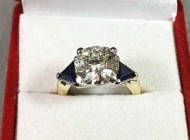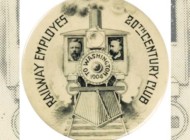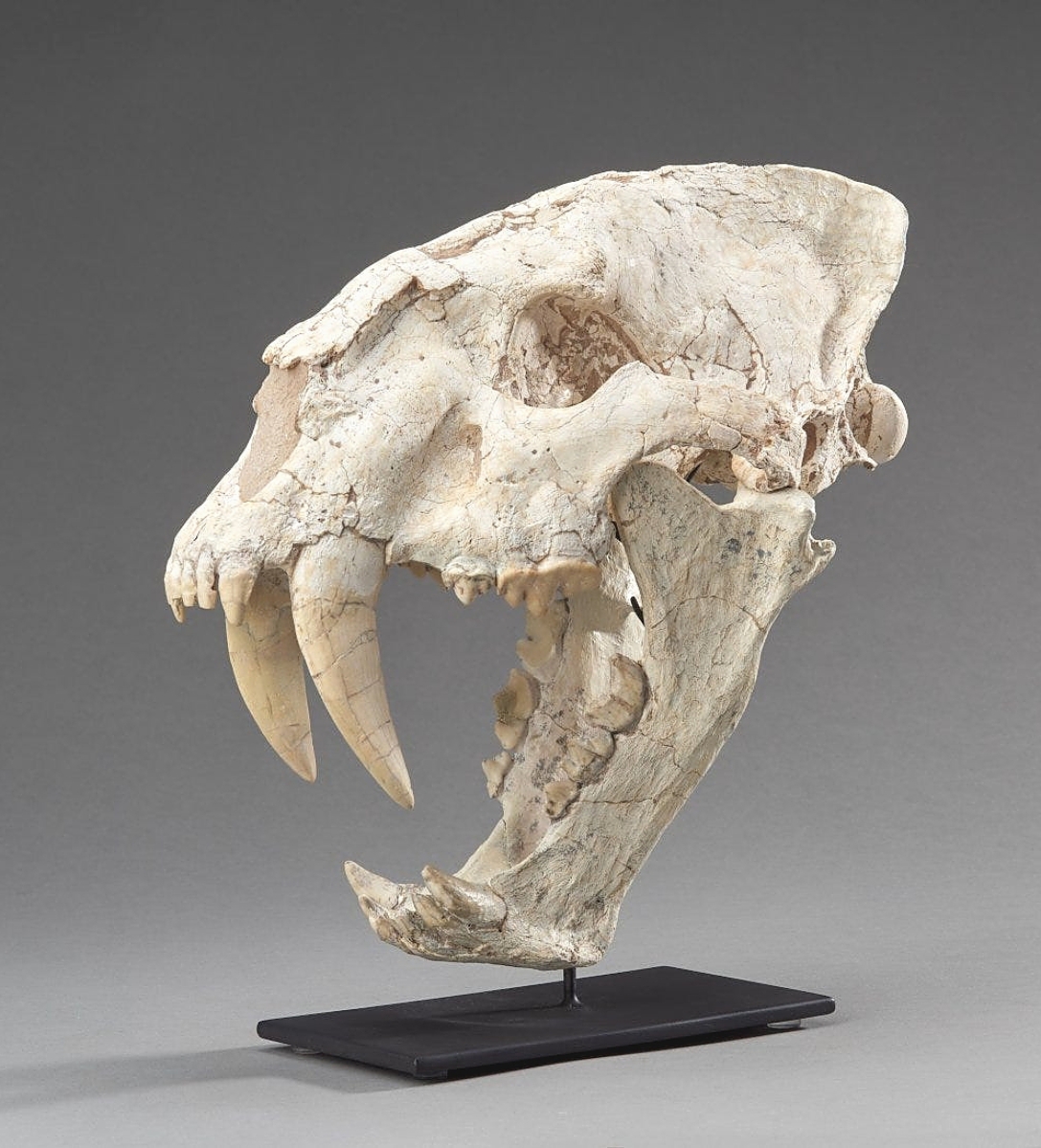
With less than two percent restoration, the firm wrote that this fossil sabercat skull from a Machairodus was a very high-quality specimen. The sabers alone were 4 inches long and it sold for $37,500.
Review by Greg Smith, Photos Courtesy Ancient Objects
PROVIDENCE, R.I. – The almighty sabercat chewed its way to the top of the block for Ancient Objects in the firm’s May 8 online sale. Two fossilized skulls from the Megantereon and Machairodus genera, offered separately, each made $37,500. Both animals roamed North America, Eurasia and Africa and dated to the late Miocene period (37 to 5 million years ago), though some records indicate that one type, the Megantereon genus of saber-toothed cats, was excavated at a Chinese site that dated to only 500,000 years ago, indicating the large cat may have lived alongside Homo erectus. The sabers were original on both specimens, extending 4 inches long on the Machairodus example.
“I think the market seems to be strong right now and more people are becoming more fascinated with the subject of fossils and realizing most of them are quite affordable, especially in comparison to other forms of art,” said auctioneer Jeff Shore. “We also had some really good examples, that always helps.”
Other fossils proved desirable, including a Psittacosaurus dinosaur specimen measuring 40 inches long that took $20,625. The dinosaur dates to the early Cretaceous (126-101 million years ago) when it roamed over Central Asia. The firm noted that its restoration was negligible, around two percent, and that it was nearly complete and original. The dinosaur was first documented by Henry Fairfield Osborn Sr in 1923 when he was director of the American Museum of Natural History. Hitting a little closer to home was an antique human skeleton, 61 inches high on its stand, that brought $2,625. It was formerly in the collection of anatomist George Erikson (1921-2009), who amassed one of the largest primate skeleton collections in the world.
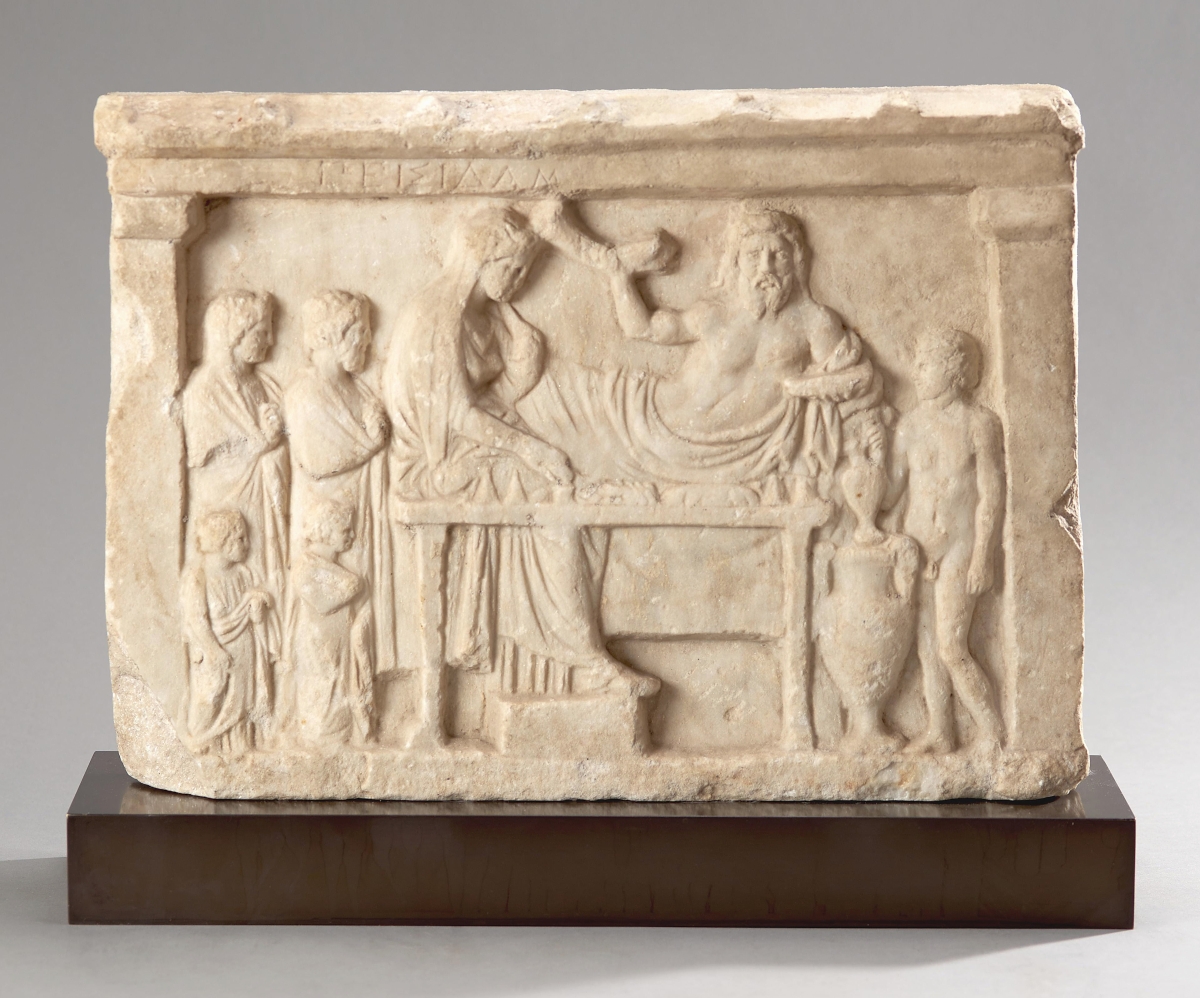
Selling for $34,800 was a Greek marble banquet relief from the Magna Graecia period, circa the Fourth Century BCE. It was incribed “Peisidam” (Peisodamos), the name of the deceased.
Hindu and Buddhist objects dotted the sale’s leaderboard. Selling for $20,000 was a large Pala dynasty Indian stone figure that measured 30 inches high. The carving dated circa the Eleventh or Twelfth Centuries and featured Parvati, the Hindu goddess of fertility, love, beauty, etc., with attendants. A stone carving of Vishnu, the destroyer, flanked by two Devis, measured 32 inches high and brought $11,563. Both had been in Sotheby’s sales in the 1990s.
From Tibet was a quality bronze of seated Tara, the Buddhist figure, with inlaid turquoise. Measuring only 5-3/8 inches high, the work dated to the Fifteenth Century and sold for $15,000.
Shore said, “For this size, it was a very good example and it brought a good price.”
Behind at $12,600 was a bronze Buddha from the Kashmir region, dating to the Tenth Century. The work had been handled by dealer Nancy Wiener.
In Greek artifacts came a marble banquet relief that measured 20¼ inches wide and brought $34,800. From the Magna Graecia period, the Fourth Century BCE, the funerary relief was carved with seven figures. An inscription reads “Peisidam” (Peisodamos), the name of the deceased.
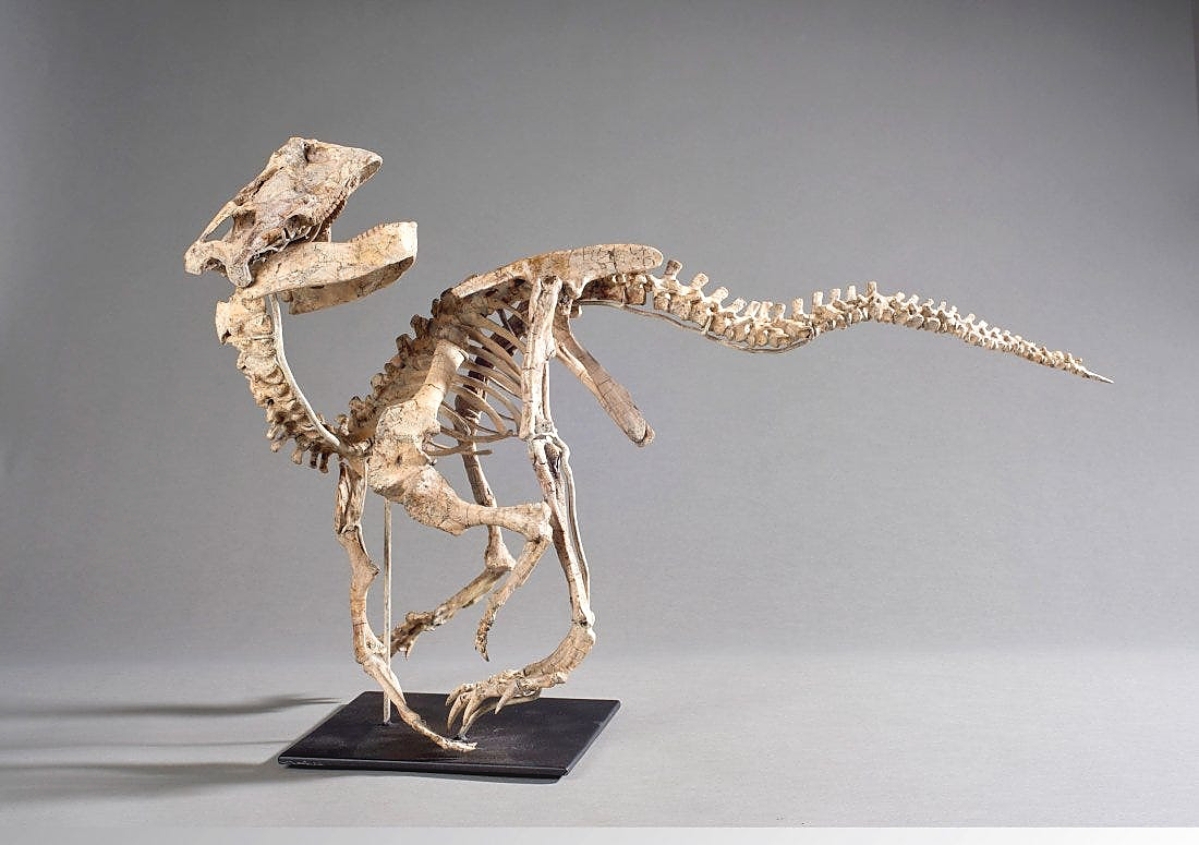
At $20,625 was a Psittacosaurus dinosaur specimen measuring 40 inches long. The dinosaur dates to the early Cretaceous (126-101 million years ago) when it roamed over Central Asia. The auctioneer said it was in a very good state of preservation with less than two percent restoration.
Among his favorite lots, Shore pointed to a Luristan bronze spearhead, 27-3/8 inches high, that went out at $4,625. The spearhead was circa 800 BCE and was crafted during the dawn of the iron age. Shore called it “the finest we have seen.”
Though he usually holds his once-annual sale in the fall, a storm of consignments allowed Shore to produce his sale in May this year, to what he said were strong results and across-the-board interest.
All prices reported include buyer’s premium. For more information, 401-753-2664.












